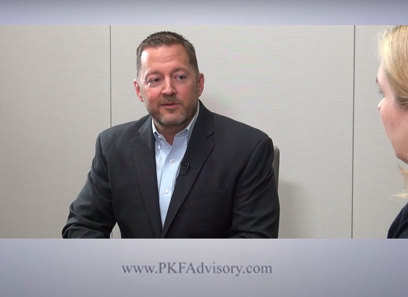M&A Outlook: Key Mergers and Acquisitions Trends to Watch in the Near Future
M&A Outlook: Key Mergers and Acquisitions Trends to Watch in the Near Future
Blog Article
Discovering the Lawful and Economic Elements of Mergers and Acquisitions Purchases

Overview of Mergers and Acquisitions
Mergers and procurements (M&A) stand for a significant segment of corporate strategy, with countless transactions occurring around the world each year. These strategic maneuvers are primarily focused on enhancing affordable benefit, expanding market share, and achieving functional harmonies. M&A tasks normally come under two distinctive classifications: mergers, where two companies incorporate to create a brand-new entity, and purchases, where one firm purchases one more, thus preserving its identity.
The motivations behind M&A transactions are varied. Companies may pursue these strategies to diversify their product offerings, get in new markets, or leverage technical innovations (Economic factors influencing M&A). Furthermore, M&A can offer as a way to eliminate competitors or access to valuable copyright
The process of M&An includes a number of phases, consisting of target identification, assimilation, arrangement, and appraisal. Effective purchases require comprehensive due diligence to analyze financial wellness, functional capacities, and prospective obligations of the target business.
Legal Structure and Conformity
Recognizing the lawful framework and compliance needs bordering mergings and procurements is vital for navigating the intricacies of these deals - Economic factors influencing M&A. These procedures are controlled by a myriad of legislations at both federal and state degrees, which intend to guarantee reasonable competitors, shield stakeholders, and promote business governance criteria
Secret regulatory bodies, such as the Federal Profession Payment (FTC) and the Securities and Exchange Commission (SEC), implement antitrust legislations and securities laws, respectively. Companies must conduct detailed due diligence to identify any type of potential lawful obstacles, including anti-competitive concerns or regulative approvals necessary for a successful deal.
Moreover, conformity with disclosure obligations is important, particularly when public business are entailed. This consists of filing required documents and offering exact information to shareholders and governing authorities.
Cross-border M&A purchases introduce extra layers of intricacy, as differing regulatory frameworks and lawful criteria should be browsed. Involving lawful advice with competence in mergings and acquisitions is essential to ensure adherence to appropriate laws and to alleviate threats. Thus, understanding these legal frameworks not only assists in compliance yet also enhances the possibility of a successful and effective merger or acquisition.
Financial Assessment Methods

Amongst the most common methods are the Discounted Capital (DCF) analysis, which approximates today value of predicted future cash circulations, and the Equivalent Business Evaluation (CCA), which reviews a company's worth about comparable companies within the same sector (Economic factors influencing M&A). Additionally, Precedent Purchases Evaluation (PTA) examines historical acquisition information to develop benchmarks for evaluation
An additional significant method is the Asset-Based Appraisal, which concentrates on the company's web asset value, offering a substantial assessment of worth by considering both existing and long-lasting properties and responsibilities. Each method has its limitations i loved this and staminas, frequently differing in applicability depending on the nature of the business and the industry context.
Inevitably, employing a mix of these monetary valuation methods can generate a comprehensive understanding of a company's value, helping to make sure that both vendors and purchasers participate in fair and fair deals during the detailed process of mergings and purchases.
Due Diligence Process
Performing complete due diligence is necessary to revealing vital details about a target business prior to finalizing a merging or procurement. This procedure includes an extensive evaluation of the target's economic, operational, legal, and regulative aspects. The main goal is to recognize prospective dangers and obligations that might affect the deal's value or post-merger performance.

In addition, cultural due diligence assesses the compatibility of the combining entities' business cultures, which is vital for an effective combination. The due diligence process calls for cooperation among various stakeholders, including legal advice, monetary consultants, and industry professionals, to make certain an alternative understanding of the target business.
Eventually, the findings from due diligence notify negotiation techniques and might cause modifications in the purchase cost or terms, therefore protecting the interests of the obtaining party and laying the foundation for an effective merger or purchase.
Post-Merger Combination Difficulties
While effective mergings and acquisitions often produce considerable harmonies and growth possibilities, the post-merger integration stage provides a myriad visite site of difficulties that can weaken these advantages. One of the primary concerns is the social combination of the merging entities.
Another considerable difficulty hinges on lining up procedures and systems. The assimilation of disparate IT systems, functional methods, and financial coverage can be complicated and time-consuming, often leading to operational interruptions. In addition, the failure to connect efficiently during this stage can lead to complication and misinformation among stakeholders, workers, and clients.
Financial assimilation likewise positions obstacles, particularly in reconciling monetary policies and bookkeeping practices. This misalignment can result in incongruities in financial coverage, impacting stakeholder self-confidence and market perception.
Finally, regulatory compliance issues may occur, requiring precise attention to lawful demands. Addressing these challenges promptly and strategically is necessary for understanding the awaited advantages of a merging or acquisition, making sure lasting success and stability.
Conclusion
To conclude, the complex landscape of purchases and mergings necessitates an extensive understanding of both legal and economic facets. Adherence to governing frameworks guarantees conformity and reduces anti-competitive threats, while robust financial valuation methods give critical understandings into business well worth. A thorough due diligence procedure is necessary for determining possible difficulties, ultimately causing more efficient post-merger integration. Effective navigation of these aspects dramatically enhances the chance of attaining preferred outcomes in M&A deals.
The intricate landscape of mergings and procurements purchases demands a detailed understanding of both lawful structures and monetary assessment techniques. Regulatory bodies, such as the FTC and SEC, impose stringent conformity requirements to guard versus anti-competitive actions, while robust financial evaluation techniques are vital for properly examining a company's value. Successful deals need comprehensive due diligence to analyze economic health and wellness, functional capabilities, and potential liabilities of the target firm.Financial due diligence analyzes historical article and forecasted economic declarations, money flow evaluation, and tax compliance. Adherence to governing structures guarantees compliance and mitigates anti-competitive threats, while durable economic evaluation methods provide important insights into firm well worth.
Report this page